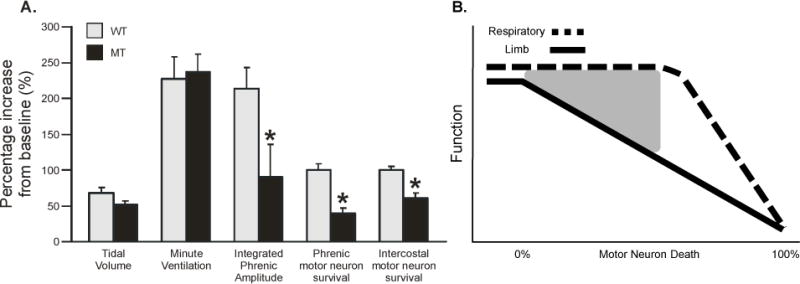Figure 3.

Ventilation is preserved in end-stage SOD1G93A rats. A. Percentage increase from baseline for tidal volume, minute ventilation, integrated phrenic amplitude, and phrenic and intercostal motor neuron survival in wild-type (WT; gray bars) and SOD1G93A (mutant, MT; black bars) rats at disease end-stage (20–30% decrease in body mass). Despite decreased respiratory motor neuron survival and output, ventilation is not affected in MT rats. B. Schematic of postulated respiratory (dashed black line) and limb (solid black line) function as a function of motor neuron death in MT rats. Respiratory function appears to be preserved long after symptoms of somatic motor weakness are observed, despite significant respiratory motor neuron death; the gray triangle represents a zone of protection for respiratory function through as yet unknown mechanisms of compensatory respiratory plasticity (see figure 4). Eventually, respiratory motor neurons death will be too extreme, causing inevitable respiratory failure. Values are means ± SEM and * = different from WT where p < 0.05 (original data described in Nichols et al., 2013 and re-analyzed here for percentage increase from baseline).
